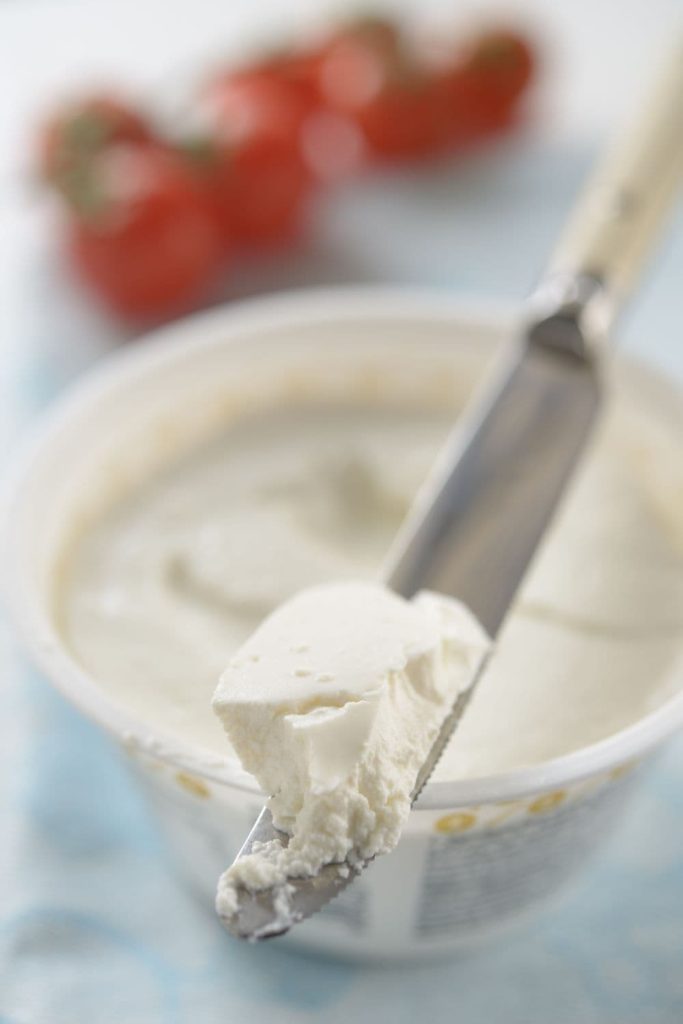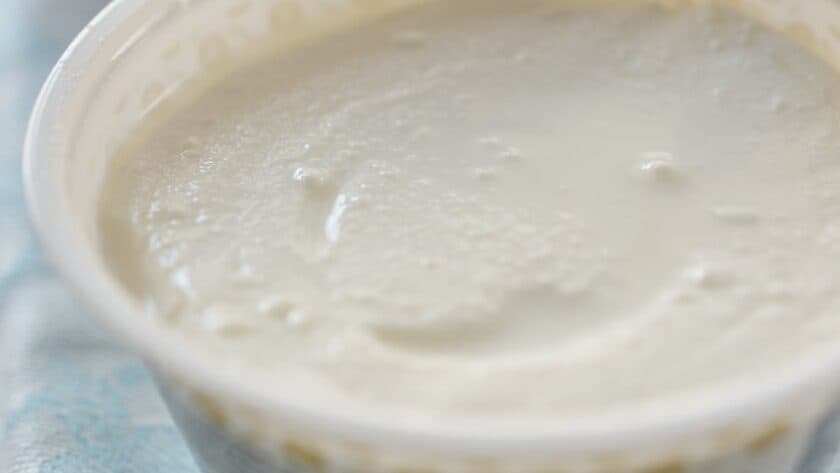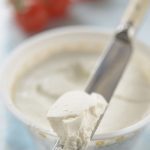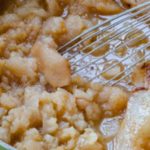If you’ve never made cheese at home, this Ina Garten Homemade Ricotta recipe is the perfect place to start. It’s incredibly simple, requires just a few ingredients, and delivers a creamy, delicate texture that far surpasses anything store-bought.
What Is Ina Garten’s Homemade Ricotta?
Ina Garten’s ricotta is a soft, spreadable cheese made by gently heating whole milk and cream with vinegar or lemon juice to form curds. It’s strained until thick and luscious, then lightly salted.
The result?
A fresh, versatile cheese that tastes clean, rich, and slightly tangy—perfect for both sweet and savory recipes.

Other Ina Garten Popular Recipes
- Ina Garten Green Salad Vinaigrette
- Ina Garten Roasted Shrimp Salad
- Ina Garten Lobster and Shells
- Ina Garten’s Middle Eastern Salad
- Ina Garten Chicken with Shallots
Reasons to Try Ina Garten’s Homemade Ricotta
- Uses just 4 basic ingredients – All pantry staples
- Ready in under 30 minutes – Quick and satisfying
- No special equipment needed – Just a pot, strainer, and cheesecloth
- Tastes incredibly fresh – Far better than store-bought versions
- Versatile in recipes – From lasagna to desserts
- Easy to scale – Make a little or a lot
Ingredients Needed to Make Ina Garten’s Homemade Ricotta
- 4 cups whole milk
- 2 cups heavy cream
- 1 teaspoon kosher salt
- 3 tablespoons white wine vinegar (or fresh lemon juice)
Instructions to Prepare Ina Garten’s Homemade Ricotta
Heat the dairy mixture
In a large stainless steel pot, combine milk, cream, and salt. Bring to a full boil over medium heat, stirring occasionally.
Add the acid
Once boiling, turn off the heat and stir in the vinegar. Let the mixture sit undisturbed for 1 minute until curds form.
Strain the curds
Line a fine-mesh sieve with cheesecloth and place it over a large bowl. Pour the mixture into the sieve and let it drain for 20–25 minutes.
Adjust texture
For creamier ricotta, drain for less time. For firmer cheese, let it drain longer. Discard or save the whey if desired.
Store and serve
Transfer ricotta to a container. Use immediately or refrigerate for up to 4–5 days.

What Goes Well With Ina Garten’s Homemade Ricotta
- Spread on warm baguette – Drizzle with honey and cracked pepper
- Layered in lasagna – Adds richness and body
- Mixed into pasta – Combine with lemon zest and herbs
- Topped with roasted veggies – Especially eggplant or squash
- Served with fruit – Try it with figs, berries, or peaches
- Blended into dips – Creamy addition to herb or spinach dips
Key Tips for Making Ina Garten’s Homemade Ricotta
- Don’t skip the full boil – The heat is crucial to forming curds
- Use fresh lemon juice or mild vinegar – Avoid strong vinegars like balsamic
- Drain to your desired consistency – Softer for spreading, firmer for baking
- Use quality dairy – Higher fat content yields creamier ricotta
- Avoid aluminum pots – They react with acids and can alter flavor
- Flavor after straining – Add herbs, garlic, or lemon zest if desired
- Serve at room temperature – Enhances the creamy texture and taste
Creative Variations of Ina Garten’s Homemade Ricotta
- Add fresh herbs – Stir in chopped chives, basil, or thyme
- Sweeten it up – Blend with honey and vanilla for dessert use
- Make it savory – Add roasted garlic or cracked black pepper
- Try a smoked version – Add a few drops of liquid smoke
- Go spicy – Mix in crushed red pepper flakes
- Turn it into a dip – Combine with Greek yogurt and lemon zest
- Use lemon zest – For a citrusy lift
How to Store Ina Garten Homemade Ricotta
- Refrigerate in a sealed container – Keeps fresh for up to 5 days
- Avoid freezing – Texture becomes grainy when thawed
- Store plain – Add flavorings only before serving
- Use clean utensils – Prevents contamination for longer shelf life
How Do I Reheat Ina Garten’s Homemade Ricotta?
Ricotta is best served cold or at room temperature. If using in a cooked dish (like pasta or lasagna), it will naturally warm up as it bakes. Avoid direct reheating in the microwave as it can separate or become watery.
Nutritional Value (per ¼ cup serving, approx.)
- Calories: 100
- Fat: 8g
- Carbohydrates: 2g
- Protein: 4g
- Sugar: 1g
- Sodium: 140mg
FAQs
Can I use lemon juice instead of vinegar for homemade ricotta?
Yes, fresh lemon juice works well as an acid to separate the curds. Use the same quantity as vinegar—about 3 tablespoons—and strain thoroughly for a smooth texture.
Why didn’t my ricotta curdle properly?
Ricotta may not curdle if the milk didn’t reach a full boil or if the acid used was too weak. Ensure your milk is whole, not ultra-pasteurized, and use either white wine vinegar or fresh lemon juice.
How do I make ricotta thicker and creamier?
For a firmer ricotta, let it drain longer—up to 30 minutes. For a creamier texture, use more cream and reduce draining time to about 15 minutes.
Can I make ricotta ahead of time?
Yes, you can prepare it 1–2 days in advance. Store it in an airtight container in the refrigerator and stir before using to refresh its consistency.
Final Words
Ina Garten’s Homemade Ricotta proves that sometimes the simplest ingredients yield the most impressive results. Creamy, rich, and endlessly customizable, this cheese can transform your appetizers, pasta dishes, or desserts. Once you try it, you may never go back to store-bought again.
PrintIna Garten Homemade Ricotta
Ina Garten’s ricotta is a soft, spreadable cheese made by gently heating whole milk and cream with vinegar or lemon juice to form curds. It’s strained until thick and luscious, then lightly salted. The result? A fresh, versatile cheese that tastes clean, rich, and slightly tangy—perfect for both sweet and savory recipes.
- Prep Time: 5
- Cook Time: 20
- Total Time: 25 minutes
- Yield: 6 1x
- Category: Condiment
- Method: Stovetop
- Cuisine: American
Ingredients
-
4 cups whole milk
-
2 cups heavy cream
-
1 teaspoon kosher salt
-
3 tablespoons white wine vinegar (or fresh lemon juice)
Instructions
In a large stainless steel pot, combine milk, cream, and salt. Bring to a full boil over medium heat, stirring occasionally.
Once boiling, turn off the heat and stir in the vinegar. Let the mixture sit undisturbed for 1 minute until curds form.
Line a fine-mesh sieve with cheesecloth and place it over a large bowl. Pour the mixture into the sieve and let it drain for 20–25 minutes.
For creamier ricotta, drain for less time. For firmer cheese, let it drain longer. Discard or save the whey if desired.
Transfer ricotta to a container. Use immediately or refrigerate for up to 4–5 days.




